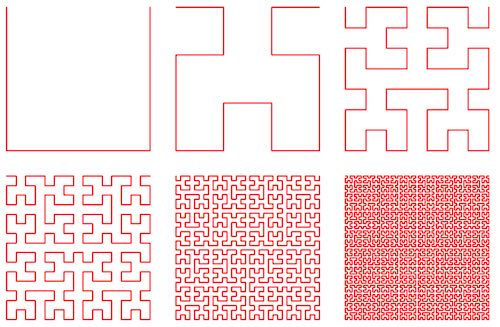- tags
- Coding
Hilbert curves can be used for an interesting trick involving 2D arrays indexing. Because of the way the Hilbert curve traverses the 2D space, indexing a 2D array this way can be a more cache-friendly solution when frequently accessing neighbors of an array element.

Figure 1: Hilbert curve with different number of iterations
C implementation from Wikipedia to convert (x,y) coordinates to linear ones and vice versa:
//convert (x,y) to d
int xy2d (int n, int x, int y) {
int rx, ry, s, d=0;
for (s=n/2; s>0; s/=2) {
rx = (x & s) > 0;
ry = (y & s) > 0;
d += s * s * ((3 * rx) ^ ry);
rot(n, &x, &y, rx, ry);
}
return d;
}
//convert d to (x,y)
void d2xy(int n, int d, int *x, int *y) {
int rx, ry, s, t=d;
*x = *y = 0;
for (s=1; s<n; s*=2) {
rx = 1 & (t/2);
ry = 1 & (t ^ rx);
rot(s, x, y, rx, ry);
*x += s * rx;
*y += s * ry;
t /= 4;
}
}
//rotate/flip a quadrant appropriately
void rot(int n, int *x, int *y, int rx, int ry) {
if (ry == 0) {
if (rx == 1) {
*x = n-1 - *x;
*y = n-1 - *y;
}
//Swap x and y
int t = *x;
*x = *y;
*y = t;
}
}